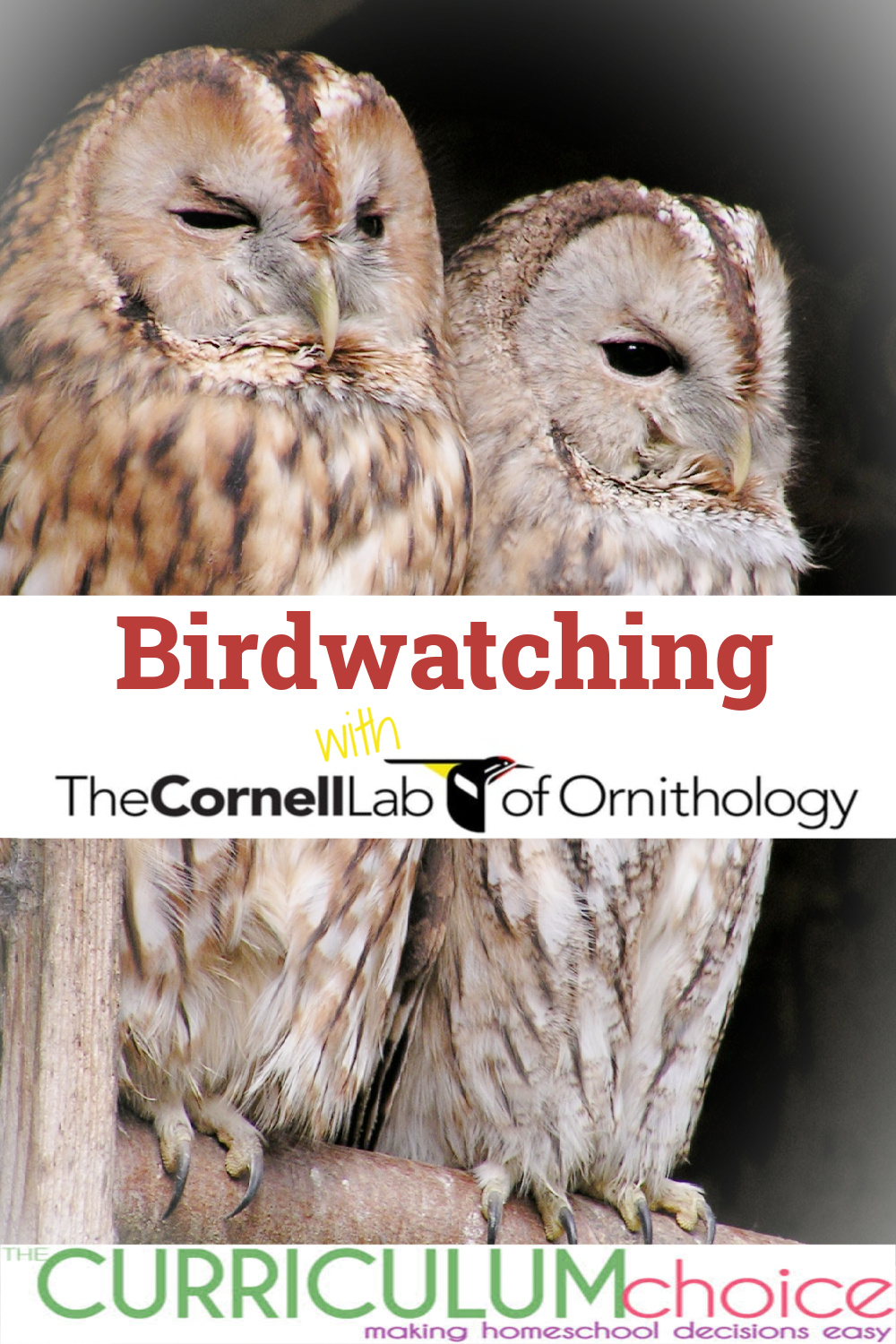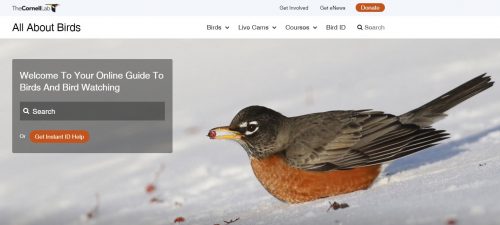Okay, I’ll just admit it right here and now. Nature study is not our strong point. We don’t go on nature walks, nor do we keep nature journals. But we have one saving grace in this department: we’ve been backyard birders for years. In fact, my eldest could identify four bird species before she was three years old! Birdwatching is simply part of our lives.
Birdwatching is also an easy and wonderful method of nature study.
All you need to get started is:
- a bird feeder
- some seed
- a field guide
- And as you go along, you may want to invest in some binoculars and a bird bath of some sort.
But that’s it!
Birdwatching with Cornell Lab of Ornithology
To get the most out of your birdwatching experience you’ll want to get to know your new best friend: the Cornell Lab of Ornithology. This website is a treasure trove of information for birdwatchers.
Whether you’re a novice or an expert, the All About Birds link is where you want to go.
There you will find everything you need to know about birds, including:
- an online bird guide
- bird identification skills
- information on bird feeding
- bird friendly homes
- live webcams – You get a front-row seat to nests of red-tailed hawks, great blue herons, ospreys, and more. A free five-activity lesson book helps you get the most out of your bird cam viewing.
- and a vast selection of courses for all levels
To really help you get the most out of birdwatching as an educational pursuit, Cornell has put together a wonderful website called BirdSleuth. Exactly what is BirdSleuth? According to the website, “BirdSleuth is an inquiry-based science curriculum that engages kids in scientific study and real data collection.”
{Note: As of the update of this post in 2021 the term BirdSleuth is no longer used by Cornell, but the lessons and activities are still available on their website}
From free curricula to all-inclusive kits, the Cornell Lab of Ornithology has a wide variety of lessons and activities to captivate learners of all grade levels.
FREE eBird Lessons by Grade:
There are also curriculum kits brought to you by generous sponsors and grants, The K-12 Education team has developed detailed and adaptable science units for educators. Both formal and informal educators will find activities, curriculum and kits to fit their needs.
Curriculum Kits:
Dissecting an owl pellet is a great way to learn about the different ecological roles organisms play in their environment. Through hands-on activities, project-based inquiry, and informative science articles, students build scientific and environmental literacy while having fun! Go through each lesson and extension activity with the webinar under the Quick Facts section.
Habitat Connections takes students on a journey to discover the diverse habitat needs of birds, experience some of the challenges birds face during migration and nesting, and realize the unique ways that birds balance the need to reproduce and survive.
Later in the unit, students will delve into bird migration through the eyes of a biologist via citizen-science data and models. Finally, students put their new knowledge to work by planning and implementing a local project to benefit birds.
Ideal for grades 3-8, the Discover Birds Kit is a perfect activity pack for a fun day outdoors! Learn about birds while playing group games and observing your natural habitat. Three short lessons give kids bird background and cool facts.
This is one of Cornell’s K-12 Education’s most successful free resources. It includes a 25-page Student Journal, a 28-page Resource Pages guide, and a 44-page Teacher’s Guide.
Although geared toward a classroom environment, this inquiry-based study translates well for the home school. This free module, which explores the scientific process though bird study, is extremely well written, thorough, and engaging. Frankly, I’m amazed that it’s free!
Birds are fascinating creatures, and birdwatching is a particularly satisfying branch of nature study. Cornell Lab of Ornithology provides everything you need to spark in your family a lifelong interest in birds.
More Nature Exploration Ideas:
- Great Backyard Bird Count Homeschool – Looks as ways to join in on the Great Backyard Bird Count.
- Food Farm and Nature Anatomy: Books for Exploring Our Natural World– have you seen these books yet? Nature Anatomy has a section on birds which is a kid friendly reference for everyone.
- Peterson Field Guides for Young Naturalists– learn about these field guides for young students. There’s one for birds!
- Nature Explorers: Coping with the Cold– a review of this nature study unit
- Exploring Nature with Children – This Charlotte Mason type study consists of a 240 page pdf that provides pages and pages of amazing fun and hands-on learning! This study incorporates MANY different things: nature walks, books to read, poems to recite and art to review. Everything you need is easily at your fingertips!
- Farm Food and Nature Anatomy: Books for Exploring Our Natural World – These Julia Rothman books are three books you want to have on your homeschool bookshelf! Whether you are currently engaging in nature study, plan to include nature study in your homeschool, or simply have curious kids, these books are sure to hit the mark!
~Originally published June 2013 and written by Ellen




Thank you so much for sharing this. It is an amazing resource.
Thank you for sharing this. I am going to have to check out their different kits. We have a ton of birds around. We see cardinals a lot around here. I think my kids would have fun with this.